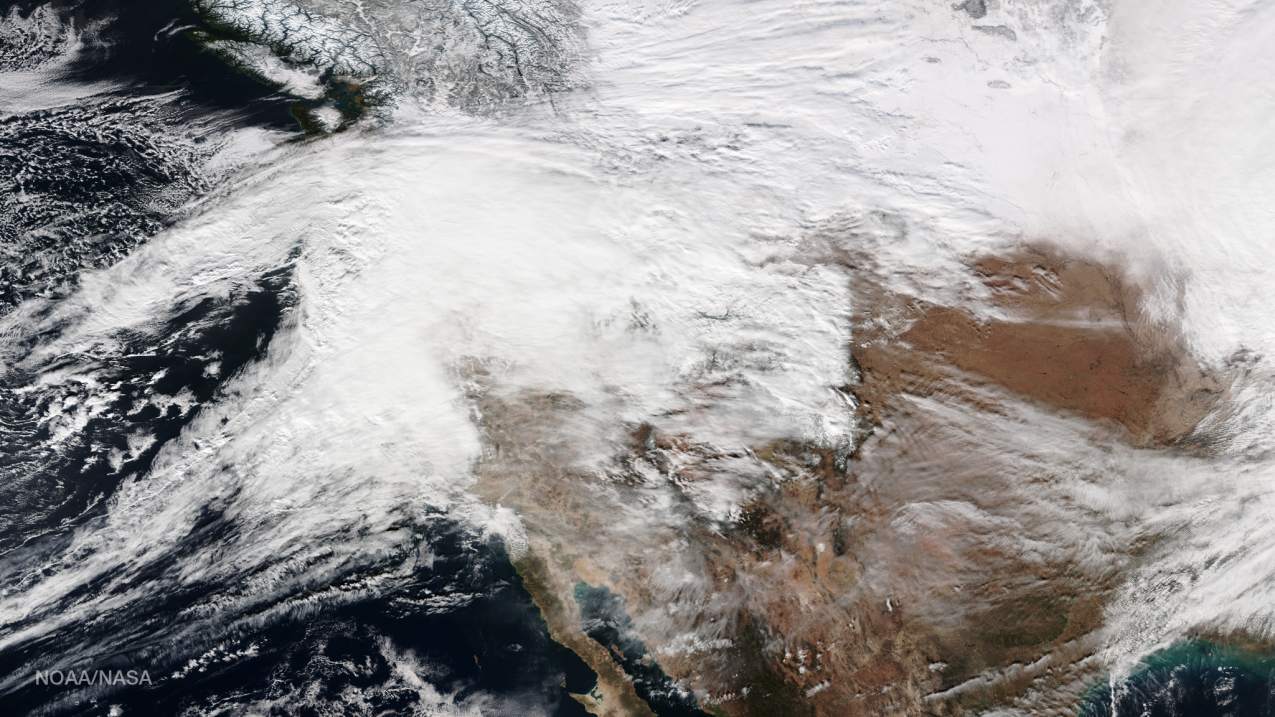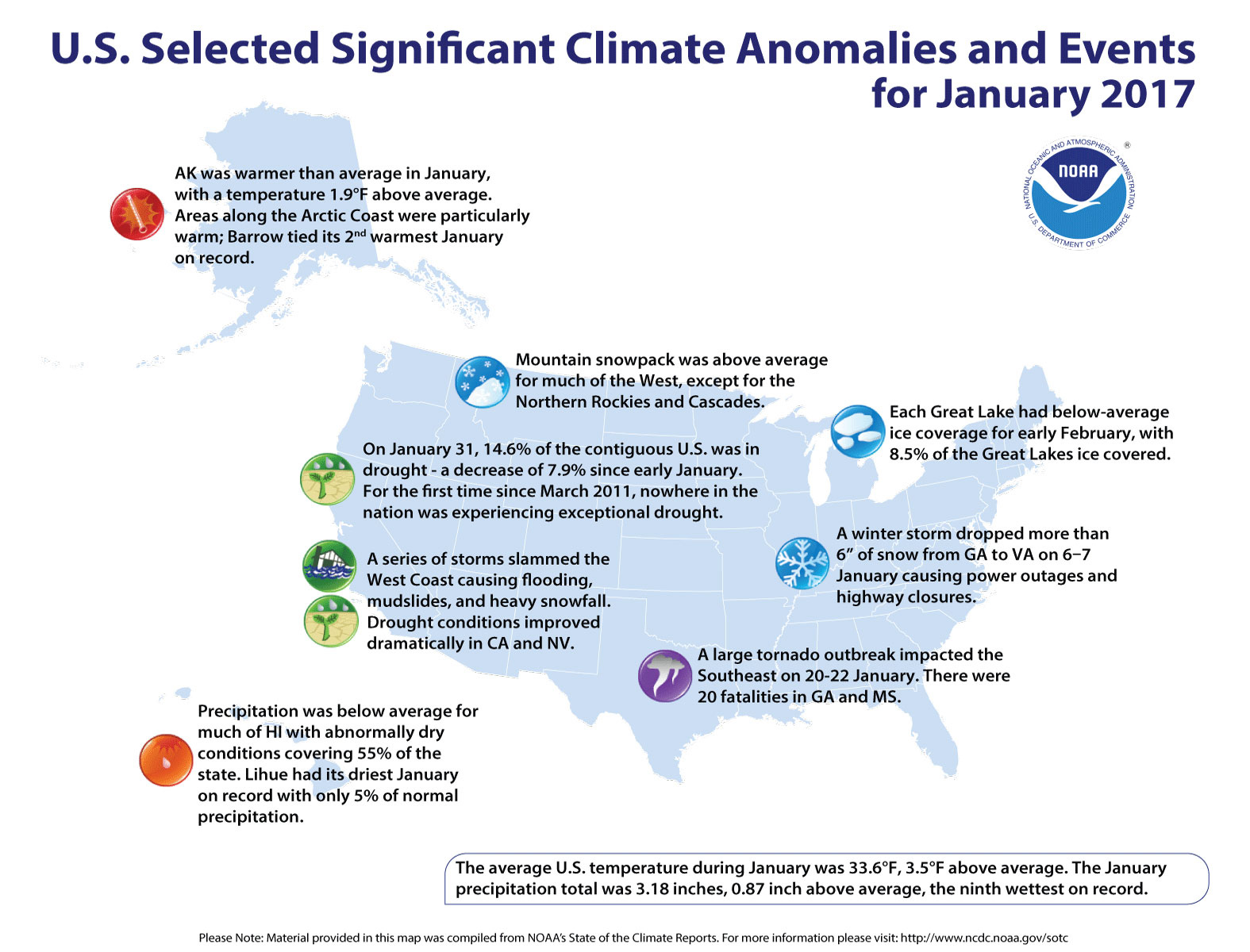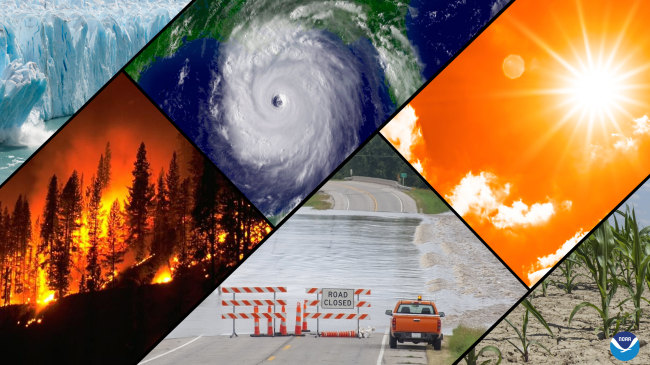Heavy rain and snow helped ease drought across the West and Southeast
By many accounts, winter seemed to stay mostly offstage in January. Rain was the star event, with warmer temperatures in the East having played a supporting role. Except for California: Parts of the Golden State saw more than 15 feet of snow, while mountain areas of the interior West, such as Colorado, Nevada and Utah, experienced higher-than-normal snowfall overall.

This true-color image captured by the NOAA/NASA Suomi NPP satellite's Visible Infrared Imaging Radiometer Suite (VIIRS) instrument on January 10, 2017, shows the extent of the storm system -- driven largely by an atmospheric river -- that dropped heavy snow over portions of California, Oregon and Washington. It resulted in school closures, downed trees, and the loss of power to thousands of area residents. Some neighborhoods in Portland received more than a foot of snow. (Image credit: NOAA NESDIS)





